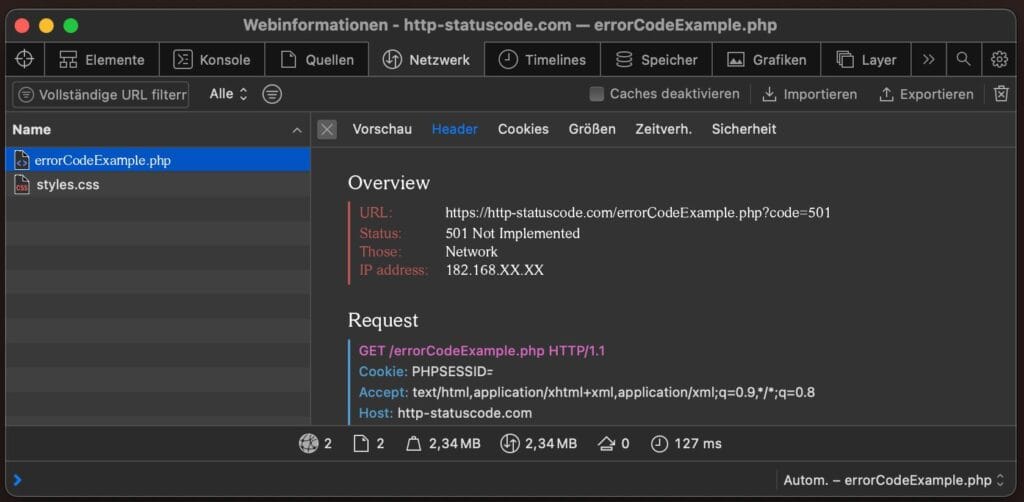
You send a request to a server. The URL is valid, your headers are included nicely, the payload is correct. But then: response code 501 Not Implemented. No stack trace, no error message in your app, just that.
What is happening here?
The 501 status code is rare, but meaningful. It indicates that the server understands your request method, for example PUT, PATCH or DELETE, but does not support it. Not because the request is invalid, but because the server simply does not know what to do with it.
What exactly is http 501?
The http 501 error is part of the HTTP specification and falls under the 5xx series: errors on the server side. But unlike the generic 500 status code, which simply says "something went wrong," 501 is a lot more specific. It says: this method is not implemented, and thus will not be implemented.
That's what "Not Implemented" literally means: the functionality you're asking for doesn't exist on the server (yet). The server is not broken. It just refuses to do something it can't, or shouldn't.
When do you see a 501 error message?
In practice 501 http on in situations where a client tries to use a method that the server does not support. A few examples:
- A frontend app tries to send a PATCH request to an endpoint that accepts only GET and POST.
- An external integration expects certain API functionality that has never been deployed on the server side.
- A reverse proxy such as NGINX or a WAF (Web Application Firewall) blocks specific methods for security reasons.
- An outdated server stack that simply does not have support for certain methods.
In the latter case, you can also see the error recurring in older HTTP implementations, for example in embedded systems or devices with limited support for modern methods.
How do you recognize a 501 status code?

If the error is visible through a frontend or browser, you usually see something like:
501 Not Implemented
The server does not support the functionality required to fulfill the request.
When using tools such as Postman, curl or Insomnia, you see the code directly in the response. And in your browser console, when using axios, for example, it may look like:
axioserror: request failed with status code 501
In crawling or technical audits, for example with Screaming Frog, the 501 status code can also be captured, especially if you are testing complex routing structures or dynamic endpoints that expect methods that are not universally supported.
How do you solve it?
Resolving a 501 status code usually means addressing something on the server side. The server understands the request, but cannot handle it. The question is: why not?
Some possible causes and directions to explore:
- The backend does not support the method: This is the most common. Add support for the requested method (PUT, DELETE, etc.) in your server or API code.
- Server configuration blocks methods: Check settings in your .htaccess, nginx.conf or other configuration files. Some servers block methods by default for security.
- Proxy or WAF blocks methods upstream: Reverse proxies, load balancers or firewalls may deny PUT or PATCH requests by default. Look at logging at the network level.
- Your client unknowingly sends an unsupported method: In SPAs (Single Page Applications) or scripts, an error in routing or fetch mechanism can cause an incorrect method to be called.
If necessary, use an OPTIONS request to the endpoint to see which methods are actually supported. Many servers then return an Allow: header with the allowed methods.
How is it different from a 405?
Important distinction: with a 405 Method Not Allowed, the server says, "this method is not allowed here, but I know it."
With a 501, the server says, "I do not know or cannot implement this method." Subtle, but important, especially when debugging APIs or routing.
Summary
The 501 status code is not as common as a 404 or 500, but if you encounter it, the message is clear: the server understands your query, but does not execute it because it is simply not designed to do so.
HTTP 501 is not a bug. It is a missing feature.
It's up to you to determine: does this functionality belong here? And if so, is it time to expand your backend, change your configuration or modify your frontend?
Are you expecting support for a certain method, and you still get a 501 http? Then at least you know one thing for sure: the server is talking back, but doesn't quite understand your language yet.